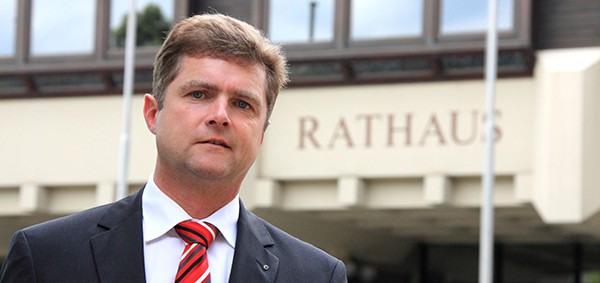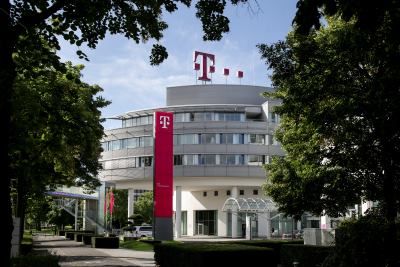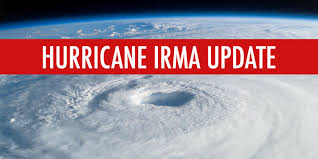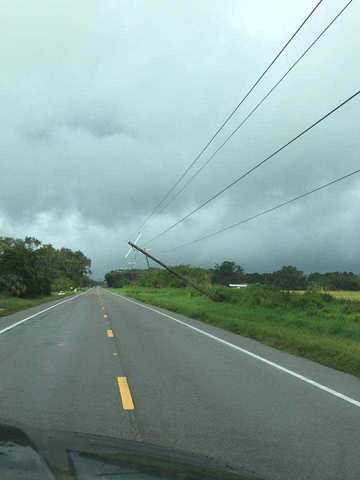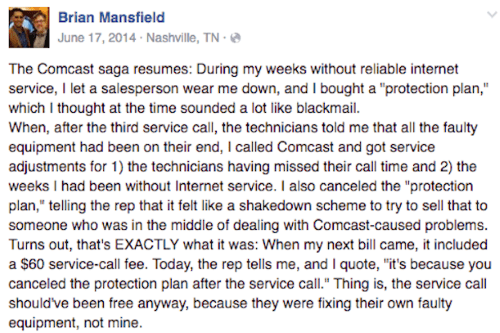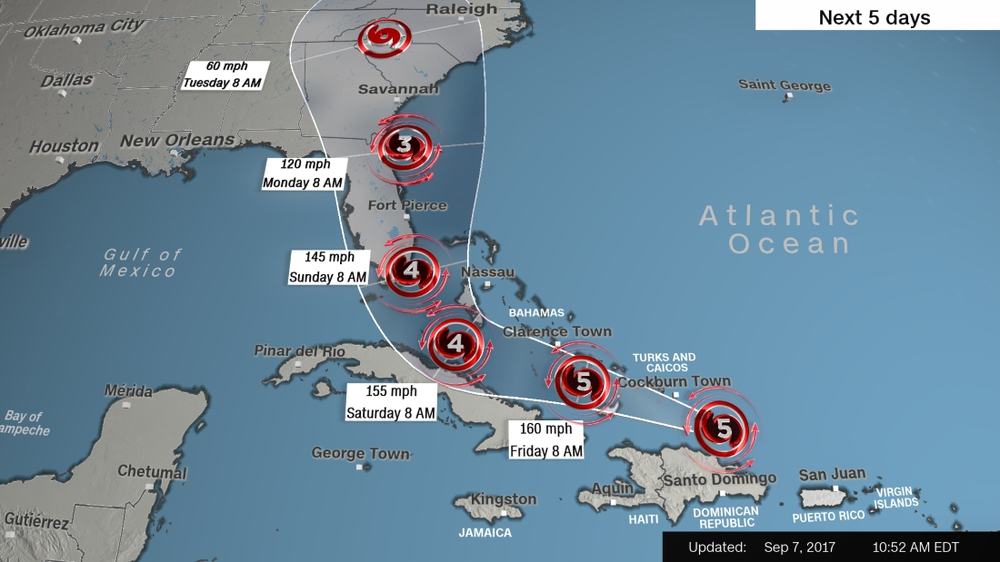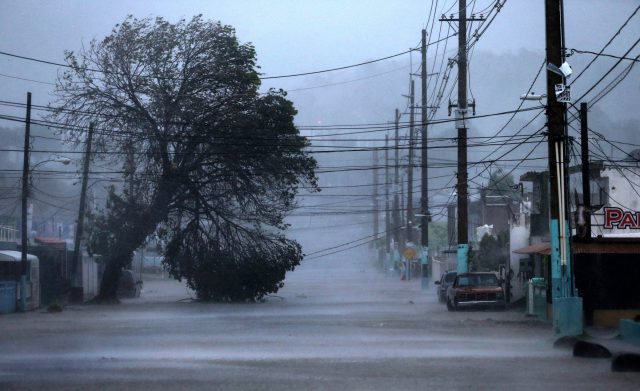 It’s the end of summer and that means it is time for the 11th annual Comcast Customer Service Makeover — the annual ritual of going through the motions of saying you are going to improve the customer experience, without actually doing so.
It’s the end of summer and that means it is time for the 11th annual Comcast Customer Service Makeover — the annual ritual of going through the motions of saying you are going to improve the customer experience, without actually doing so.
Since at least 2006, Comcast has promised it would get better, but somehow never does. That the cable company remains one of America’s most-hated companies 11 years after first promising to do better, evidently doesn’t faze J.D. Keller, the latest executive assigned to win customers over. At least Keller admits it will be a tough job to turn around one of the country’s greediest and nastiest companies. He likens it to “turning a ship around.” We’re not talking about a weekend pleasure craft either. We’re talking a colossal toxin-filled tanker here. That’s an appropriate vision of Comcast, where the craft of alienating customers with impenetrable offshore customer service and local cable stores complete with bulletproof glass to protect the employees from customers has been finely honed for years.
To paraphrase Lily Tomlin’s Ernestine, Comcast’s customer service experience is best summed up as: “We don’t care — we don’t have to. We’re the cable company.”
Somehow, Comcast has spent another $300 million of ratepayer’s money for a three-year “corporatewide push,” beginning in 2015, to fix the damage. Considering the company’s war-criminal-like reputation score has barely budged, one wonders if the $300 million was spent on a golden Band-Aid… that has since fallen off. Comcast’s bullet points of new wonderfulness doesn’t seem to impress:
- Comcast has opened eight Apple-style XFINITY retail stores in the Twin Cities, notes the Star Tribune. Have you ever been excited visiting your phone, gas, or mobile company store? Didn’t think so. Shiny and new doesn’t help if you are still standing in line for 30-60 minutes to swap out a cable box.
- Comcast has beefed up its call center staff. But many customers tell us that is more of the same S&M experience they get now from offshore call center representatives, who apparently delight in having their revenge against evil and annoying Americans. Comcast’s customer service representatives are excellent at reading scripts, but when you ask for credit or above-and-beyond help with a service problem, suddenly their English skills go missing. “Twice nothing is still nothing.”
- Comcast has put more technicians on the street. But they would not have to if their cable infrastructure wasn’t ineptly maintained in some areas of the country.
- Comcast has developed online tools so customers can fix problems themselves. That’s a slight improvement, if only because you don’t have to call for a verbal torture session with the Philippines call center. But in fact such tools benefit Comcast more than customers, because it cuts their costs.
Mr. Keller:
“When I interviewed with Steve White [Comcast’s West Division president] and CEO Dave Watson, all they talked about was customer experience. Dave Watson regularly calls clients deep in our organization to ask, ‘How’d we do?’ He’s out on the street listening to people. There is no ivory tower here. We have a long way to go to respect our customers and do a better job. Our goal is to be recognized by our customers and J.D. Power as the No. 1 communications company in the world. That’s what brought me to Comcast. A recent American Customer Satisfaction Index report gave Comcast its highest marks in 15 years [although it still trailed Verizon, AT&T and Charter Communications].”
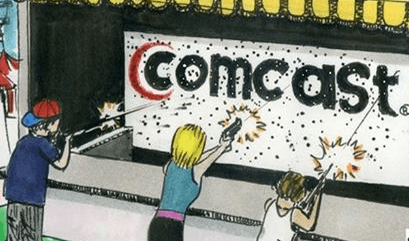 Indeed, it trails among many, many, many, many, many other companies. What does “clients deep in our organization” mean, exactly? Comcast is calling itself? We also find it impossibly hard to believe a division president in manning a booth on the street asking random customers how they feel about Comcast. At least not without his bodyguard. Comcast is the very definition of an “ivory tower” corporation, completely out of touch with the wants and needs of its own customers. Want evidence? Junk fees, channel shoveling, data caps, offshore customer service, constant rate increases, tricky promotions, and those bullet-proof glass windows at the customer service center, for a start.
Indeed, it trails among many, many, many, many, many other companies. What does “clients deep in our organization” mean, exactly? Comcast is calling itself? We also find it impossibly hard to believe a division president in manning a booth on the street asking random customers how they feel about Comcast. At least not without his bodyguard. Comcast is the very definition of an “ivory tower” corporation, completely out of touch with the wants and needs of its own customers. Want evidence? Junk fees, channel shoveling, data caps, offshore customer service, constant rate increases, tricky promotions, and those bullet-proof glass windows at the customer service center, for a start.
Every year, Comcast reminds customers it has a long way to go to repair its emotionally abusive relationship with customers, who feel trapped with a company many wish they could ditch once and for all. Like other tragic relationships gone bad, the promises that things will get better are often empty.
Keller’s out-of-touchness shines as he talks about “respecting our customers and their time.” Comcast commits to two-hour service windows, and claims they text or call 30 minutes ahead of let customers know when the truck will arrive. Customers tell us that is true in some places, but not in others. The arrival of a repair crew does not guarantee the problem will be adequately addressed during that call either. Many tell us they have to get several crews out before a problem is really fixed. Keller also claims Comcast reads all the feedback customers give the company, but doesn’t mention it routinely ignores most of that feedback. Otherwise, those constant annoyances and policies that gave the company its horrific reputation would have been dispensed with a decade ago.
“We believe if customers are happy with us in the first 90 days, they’re going to stay with us for life,” Keller said with a straight face, forgetting that many customers don’t have a choice. Swapping one cable company for another is about as common as choosing where you get your tap water. It’s Choice “A” or Choice “A.” You decide.
Keller suggests he thought long and hard before accepting a job at the most loathed cable company on the planet.
“I took the time to take a deep breath and spend time with my wife and three children,” Keller claimed. “I knew I wanted to challenge myself. I’m not happy unless there’s some big boulder I have to push up the hill.”
Somehow, and probably with the help of a generous compensation package, he got over his concerns.
There are two ways to deal with Comcast’s nightmarish reputation. Either blow it up and start a new relationship with customers or convince yourself that your poor reputation barely exists at all and is easily fixed. The latter is what Comcast’s annual exercise in “improving the customer experience” is all about. Define a problem as fixable, pretend to fix it, and next year tell customers you are making progress. After a decade, this annual ritual is now a tradition.
Until customers have adequate competitive options to send a real message Comcast cannot afford to ignore (“I and all my friends are canceling service”), expect more of the same.


 Subscribe
Subscribe
